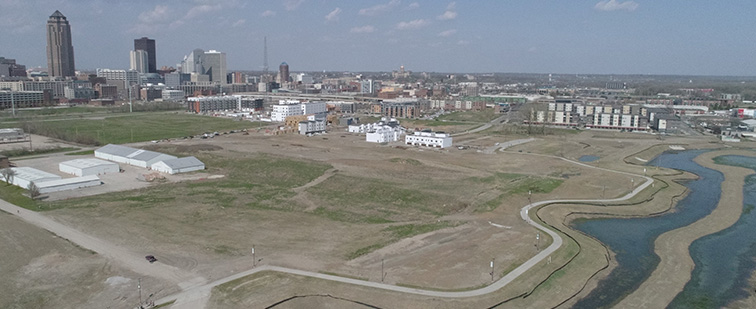The Gray’s Station storm-water wetland basin and trail are finally complete. While many bikers, walkers and joggers are using the trails for fitness, many may not understand what they’re running next to is a well-designed system aimed at improving our city and states’ water quality.
Approximately 300-400 acres of downtown water flows into the Gray’s Station wetland basin. Civil Design Advantage, alongside RDG who helped master plan the neighborhood, have created a layout and a plan to manage, control and improve the water.
“There were two separate storm-water systems with two pump station that we merged into one large wetland basin,” said Greg Pierce with RDG.
“In the old station, water would flow through the pipe system, to the pump station and straight into the river,” said Ryan Hardisty with CDA. “In the case of a 1.25 inch storm event, the basin will take days to release the water and in larger, more unique storm events, like a 500-year flood, it will build up and hold the water to keep it from backing up into the street system.”
In order to improve the water quality, RDG designed the basin so that water now travels 3/4 of a mile, through natural grasses, plants, sediments, oils and nutrients to cleanse the water before it enters into the river. The team planted nearly 45,000 plant plugs in late fall of 2019 and over the course of the next two to three years, those will emerge, blossom and flourish.
“Some people don’t realize in the urban environment, rain most generally goes from our roofs and gutters, into storm sewers and straight into our streams. We’re changing that with this basin,” said Pierce.
Right now, bikers along the trail will mainly notice prairie grasses and some smaller vegetation and manicured grasses growing. Many of the other species take a full year cycle to emerge.
CDA, who also mapped the bike trail that spans from MLK Jr. Parkway through the community and across the bridge into Gray’s Lake, says people will really begin appreciating the wetland basin when they can see it.
“It’s a really neat thing to connect downtown with an area like this, Gray’s Lake and other nature systems,” said Hardisty.
In the future, both CDA and RDG hope the basin can be used for educational purposes with nearby schools as well as for field trips. There will be opportunities to learn about wildlife, plants, flowers, pollinators and so much more once the basin matures and diversifies.

